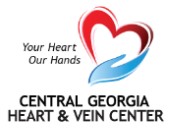A recent study by Johns Hopkins looked into the latest fitness trends to determine if they were heart smart or not. As cardiologists, exercise is a big part of prescribed changed behaviors when battling heart disease. Moving your body and strengthening your heart can prolong your life and cut down on negative symptoms. But not all trendy exercise plans are created equal. Let’s take a look at how to determine if a certain plan is right for your needs.
Determining Your Fitness Level First
Some trendy exercise routines are heart smart for people in a certain activity level range. For example, if you’re a novice, CrossFit might not be your smartest first step. Here’s how to determine if a fitness routine is right for you.
- Examine your physical activity level and ability. Everyone has different limitations. Consult your cardiologist about how much stress your should be putting on your heart. Also, many gyms have a free or low-cost evaluation with a trainer to assess your strength and determine if a particular fitness plan is heart smart.
- Do you feel okay during and after a workout? Let’s say you tried something new like a cycling class, hot yoga, cross fit or any other new trend. If you were in pain at any point, it might not be the right fit. Remember, easing yourself into a workout can prevent both muscle and cardiac injuries.
Hot Trends You Might Be Considering
- HIIT (High-Intensity Interval Training)– This can relate to trends like P90x, Calisthenics, Cross Fit and Tough Mudder type workouts. These all involve bursts of hard heavy hitting circuits followed by rests and then bursts. If you are recovering from a heart attack or stroke, be cautious of this workout because they put a lot of stress on your heart and lungs. This is, however, a great plan for those looking to lower cholesterol, lose weight, and get your blood pumping.
- Low-Intensity Workouts– This includes trends like Pilates, Zumba, Power Yoga, and Incline walking. These are generally good intro workouts and are low intensity while still falling into Semi-Cardio. If you are recovering from injuries, these place minimal stress on your joints and heart while still keeping you in a fat-burn and training heart rate zone.
- Outdoor Activities– This includes walking, hiking, canoeing and biking. For older patients looking for a heart-smart way to begin exercising long outdoor walks are an excellent place to start. These workouts can range from light to high intensity depending on your chose medium and terrain. Similarly, spending time outdoors is linked to higher vitamin D levels, more endorphins, and serotonin production, and lowered stress levels. Anyone can begin outdoor exercises.
Be Heart Smart
Exercise is essential to maintaining a healthy body and healthy mind. Be conscious of which exercises are heart smart for you. Not all trends are created equal for all bodies. When in doubt, consult your cardiologist about your cardiac limitations.





